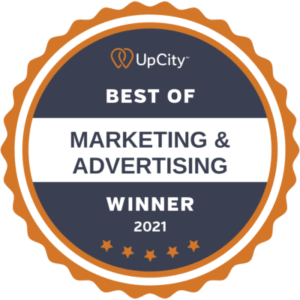
Digital PR Services That Will
Get Eyes On Your Brand
Elevate your story with the help of Ignite Visibility's expert team. Our relationships with media, online influencers and bloggers drive visibility by featuring your brand where you consumers spend time.
THE LEADER IN DIGITAL MARKETING








CREATIVE SOLUTIONS
“Ignite Visibility's ability to go in and do the work for us makes a big difference.”
- Crowdsourcing SaaS Platform
CUSTOM STRATEGIES
“They have felt like an extension of our own company.”
- Greeting Card Company
INDUSTRY-LEADING TEAMS
“They show tangible results. It's a fantastic relationship.”
- Restaurant Accounting Company

Why Select Us Over Other Digital PR Companies
- Nationally Recognized. Our excellence in our services is not merely self-proclaimed; we've earned top spots on numerous industry lists, marking us as a leading digital PR agency in the United States.
- Various Industries. We work with 150+ clients across a wide range of industries, including home services, automotive, insurance, healthcare, and more!
- We pride ourselves on transparency. With our detailed processes and expert project management, you will always know the status and progress of your marketing campaigns.
- We're not about abstract tactics. Instead, we dive right in, shaping quantifiable, achievable goals from day one.
- Compliance and Creativity. We adhere to Google and FTC Guidelines, using 100% white hat strategies to build backlink profiles.
- Clear ROI. Regular reporting will always make clear the return on your investment in Ignite. Never wonder if your marketing is working or not.
- Custom Strategy. We don't believe in one-size-fits-all solutions. We create, specifically for you, an all-encompassing strategy tailored to your brand's marketing goals.
- Strategic Blueprint. With over a decade of experience, we know how to infuse industry best practices into your brand’s digital marketing blueprint to find the success you’re after.
EARNED MEDIA
IGNITE VISIBILITY DIGITAL PR SERVICES
 Media Outreach and Relations
Media Outreach and Relations
Our digital PR services experts will combine the right mix of media outreach and media relations to help build a stronger brand image and increase brand awareness in your industry.
 Media, Blogger, and Influencer Outreach
Media, Blogger, and Influencer Outreach
Getting on the right blog or in with the right influencer can make all of the difference in your brand’s PR. Our bilingual team will target media, bloggers, and influencers in a variety of languages to make sure your brand gets in front of the right audience.
 Community Outreach
Community Outreach
Our team will oversee all community development initiatives. We will plan, develop, and implement programs that will both promote your brand and benefit your community.
 Copywriting
Copywriting
Let our team of creative and powerful writers craft copy that will send the right messages to your audience using your voice and tone. We can also assist with the messaging involved in creating contenting marketing strategies and linkable assets to help further grow your brand awareness.
 Translation and Regional Marketing
Translation and Regional Marketing
Consumers receive information more willingly when it is presented to them in their native tongue. Not only will this show appreciation to your audience, but it will also work to create trust between you and your customers and help them better understand what you offer. When people understand that your brand really understands and respects their culture, it gives you a competitive advantage over your competition.
 Media Pitching and Content Pitching
Media Pitching and Content Pitching
Letting PR opportunities come to you is only a piece of the puzzle. Sometimes you need to find the correct opportunities to showcase your brand in front of the right audiences. Our digital PR services specialists seek out publications, media outlets, journalists, reports, bloggers, and editors to pitch your brand and content to. Well-written media and guest content opportunities will work to build digital PR, create relationships, and build your audience.
OUR PR PROCESS
STEP 1
Media Outreach and Relations
STEP 2
Media, Blogger, and Influencer Outreach
STEP 3
Community Outreach
STEP 4
Copywriting
STEP 5
Translation and Regional Marketing
STEP 6
Media Pitching and Content Pitching
STEP 6
Unlinked Brand Mentions
Your brand may be mentioned online, however, those mentions may not always be pointing back to your site. During this process, we will find these unlinked mentions, reach out to the sites, and ask them to convert the mention into a live link back to your site. If they’re going to mention you, you might as well get a backlink for it!
STEP 5
Competitive Backlink Gap Analysis
Wondering why your competitors are ranking at the top of the Google SERPs, and you aren’t? It’s most likely because of their strong backlink profile. Our team will work with you to create your own success but also review the backlink profiles of your top competitors. This allows us to unravel and replicate the top opportunities that will increase and diversify your backlinks and backlink profiles. It also gives us a better idea of what type of content is resonating with your preferred audience the most. This will give you a strong backlink profile while also lessening the gap between your brand and your top competitors.
STEP 4
Orchestrated Outreach and Content Promotion
Public relations outreach opportunities can make or break your brand! When you work with Ignite, our team will diligently work to plan for and execute all opportunities that will benefit your business. In addition, we will define your audience types, conduct the necessary research, and strategically promote your press releases on industry-specific platforms that will give you the best exposure and engagement possible.
STEP 3
Journalist Response Requisition
Media opportunities can be one of the most valuable tools in digital PR. However, monitoring them can be time-consuming! Our team will work hard to monitor upcoming media opportunities and nurture relationships with journalists who write in specific industry verticals that apply to your brand. As we look for opportunities to send expert quotes for editorials or quote placements for our digital PR services clients, we work hard to find opportunities for you to be positioned as a thought leader and subject matter expert in your particular industry.
STEP 2
Story Pitching
Our digital PR services team will work hand-in-hand with content writers and digital strategists to develop stories and content pieces that represent your company in the best way possible and can be pitched to your industry media outlets.
STEP 1
Backlink Clean Up
Backlinks are great – until they’re not. One of our digital PR services includes link detoxification and link reclamation. During this process we will identify bad links using the industry’s latest tools, search for the contact information of websites that contain your links, contact the webmasters to remove the bad links, and create a disavow file for Google. We will also reclaim links by finding and fixing broken links or replacing online content that has been improperly linked. Say goodbye to those bad backlinks that are pulling you down!
FAQS
LEARN MORE ABOUT IGNITE VISIBILITY DIGITAL PR SERVICES
Digital PR, or digital public relations, is the strategic management of a brand’s reputation and online presence through a variety of channels, including media relations, reputation management, influencer collaborations, link building, and more.
If you want to be successful in the digital marketplace, they are! People are going to talk about your brand, you might as well make sure it’s something you want them to say.
While both types of PR aim to protect and manage a brand’s reputation, traditional PR focuses on traditional media opportunities such as newspapers, television, or radio. Traditional PR tends to focus on a larger audience. Digital PR is usually a bit more granular. It focuses more on providing contributing efforts in establishing, building, and maintaining your brand and your company leader’s reputation as a thought leader and industry expert. Working hand-in-hand with an SEO expert, digital PR services also work to increase a brand’s SEO metrics and improve its online visibility.
It sure does! Digital PR services should go hand-in-hand with your SEO strategy. Oftentimes, when your digital PR and SEO are integrated correctly, it will increase your SEO results and SERP rankings significantly. Having strong and cohesive SEO and digital PR strategies will result in benefits such as building brand and website authority, driving organic traffic to your site, increasing organic visibility, and improving brand awareness.
Insights from Digital PR Experts
Learn more about the best practices and strategies driving Digital PR performance in 2024. Check out these top-performing articles for tips and tricks sourced from years on the job.
How to Integrate Your Digital PR and SEO to Amplify Your Brand Reach
The goal of Digital PR is to increase authority and exposure by actively building up your brand's backlink portfolio. When it comes to strengthening your SEO strategy and boosting your SERP rankings, a solid Digital PR plan has tons of benefits. In this blog our Digital PR expert, Lauren Roberts, will tell you how to pair digital PR and SEO to find success for your business through increased visibility and brand recognition.
What Is The Real Value Behind NoFollow, Sponsored, and UGC Links?
We all know dofollow linked are the most popular links in SEO> But what about the other types? In this article, James Gibbons, describes the differences between nofollow links, sponsored links, and user-generated content (UGC) links. Learn from oura digital PR agency expert which links are the most important for your overall SEO strategy.
PR vs. Marketing: what's the Difference? (And Does it Matter?)
Digital PR and marketing go hand in hand. Often, the two are grouped as synonyms, but marketing professionals everywhere know that is NOT true. Learn about the differences between the two services and the individual strategies you can use to reach your overall business goals.
The Most Important Linkable Assets for Your Digital PR Campaigns
It's no secret that certain types of content gain more links and shares than others. Yet, striking the golden balance between being link-worthy and shareable assets can be difficult. In this article, Theresa Bass, Digital PR expert, unmasks the different types of linkable assets that'll have reputable sites linking back to your pages.
How to Build Ecommerce Links With Testimonials & Product Reviews
Product reviews and testimonials can be an excellent way to encourage people to link to your website, but it’s not just about getting links. It’s also about building trust and credibility with potential customers meaningfully. In this guide, Lauren Roberts discusses the steps digital PR agencies can take to leverage product reviews and testimonial link building.
A Guide to Implementing Effective Digital PR Campaigns
Digital PR is similar to traditional public relations, only it focuses on spreading your news on the web. Tactics used in a digital PR campaign include content marketing, social media communications, search engine optimization, and expert reviews and commentaries. Learn how to create and implement a successful digital PR campaign that will have everyone talking about your business – in a good way!
What is HARO?
A "Help A Reporter Out" is a strategy both brands and journalists use to strengthen their reputations, build connections, and increase their coverage. So, how can you use them to your advantage to boost your brand awareness and increase your SEO rankings?
How to Find the Proper Prospects for Outreach Campaigns
Believe it or not, all your brand awareness, lead generation, and conversions won't just come to you. You have to reach out—which is why you need to get used to finding prospects. Our digital PR agency is ready to simplify prospecting and make it work for you, by finding and vetting prospects that qualify your leads.

